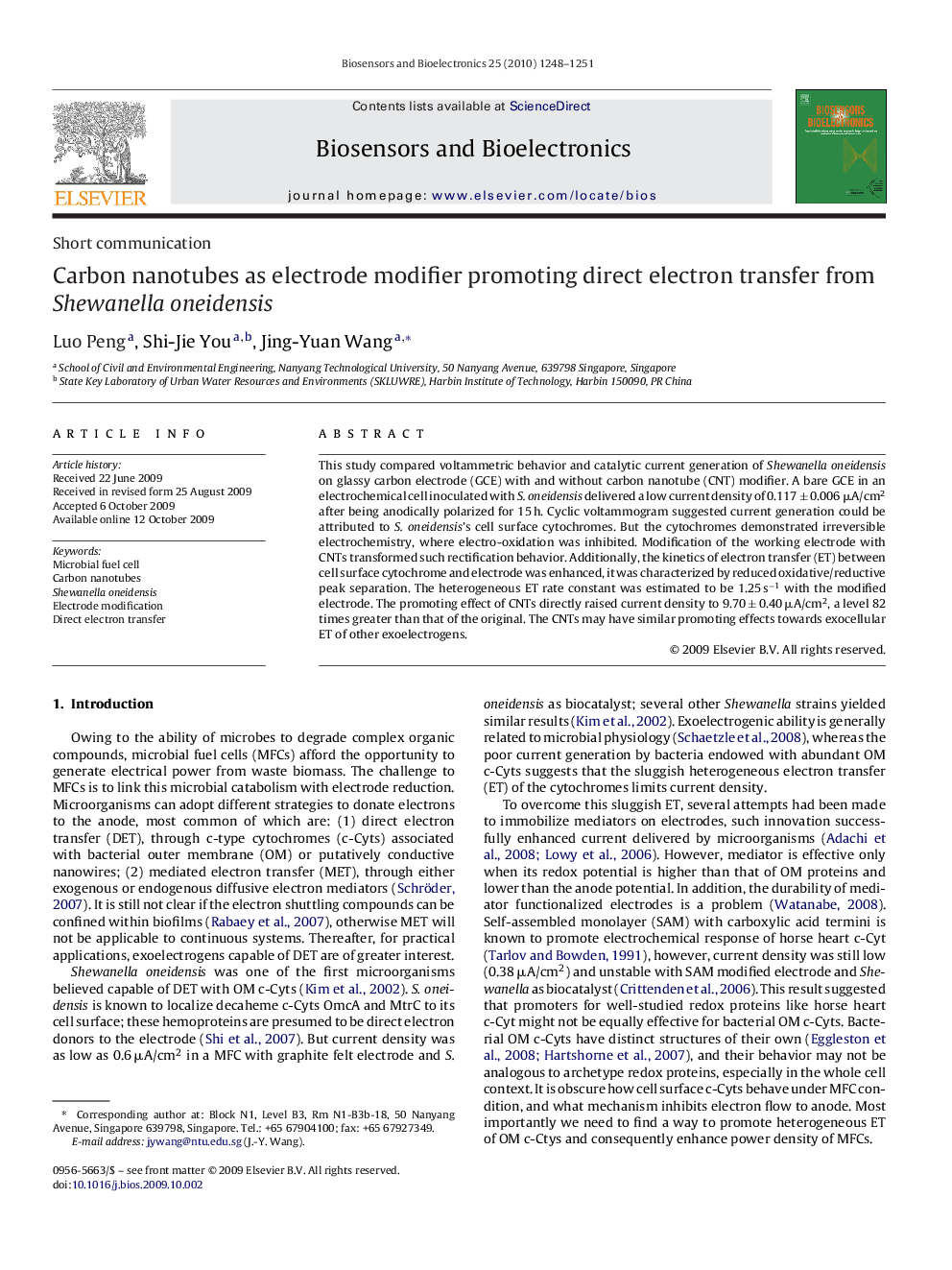| Article ID | Journal | Published Year | Pages | File Type |
|---|---|---|---|---|
| 868828 | Biosensors and Bioelectronics | 2010 | 4 Pages |
This study compared voltammetric behavior and catalytic current generation of Shewanella oneidensis on glassy carbon electrode (GCE) with and without carbon nanotube (CNT) modifier. A bare GCE in an electrochemical cell inoculated with S. oneidensis delivered a low current density of 0.117 ± 0.006 μA/cm2 after being anodically polarized for 15 h. Cyclic voltammogram suggested current generation could be attributed to S. oneidensis's cell surface cytochromes. But the cytochromes demonstrated irreversible electrochemistry, where electro-oxidation was inhibited. Modification of the working electrode with CNTs transformed such rectification behavior. Additionally, the kinetics of electron transfer (ET) between cell surface cytochrome and electrode was enhanced, it was characterized by reduced oxidative/reductive peak separation. The heterogeneous ET rate constant was estimated to be 1.25 s−1 with the modified electrode. The promoting effect of CNTs directly raised current density to 9.70 ± 0.40 μA/cm2, a level 82 times greater than that of the original. The CNTs may have similar promoting effects towards exocellular ET of other exoelectrogens.
